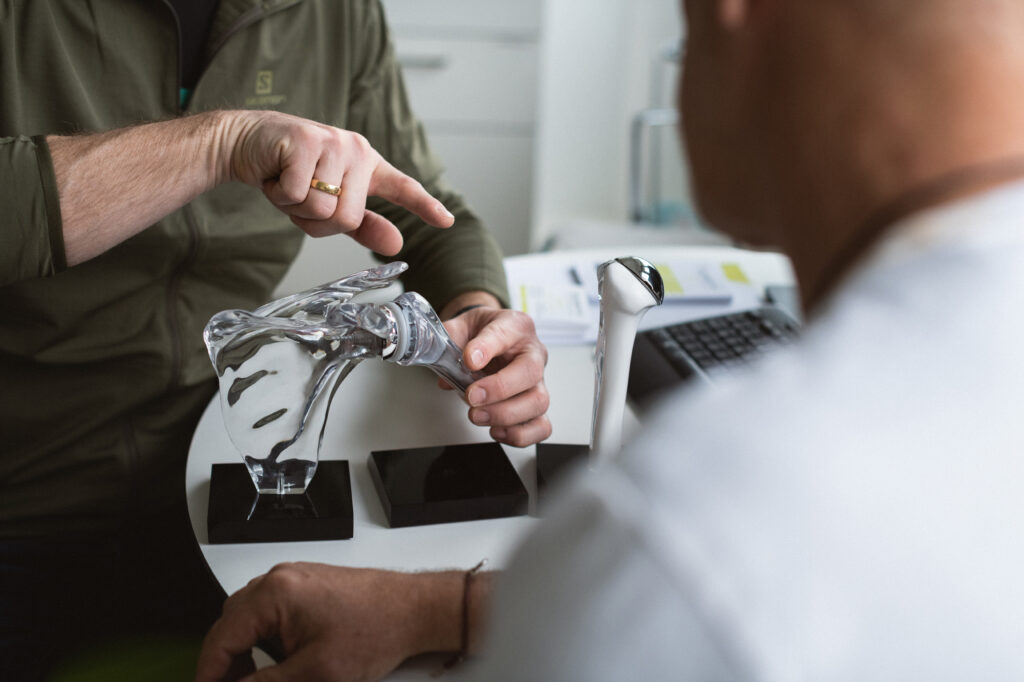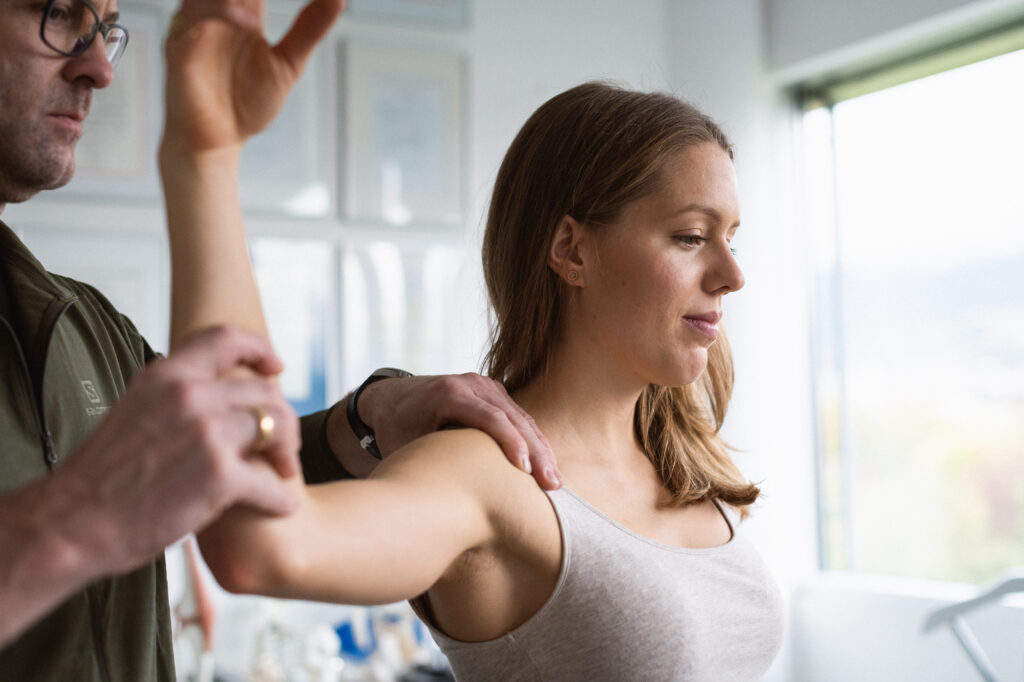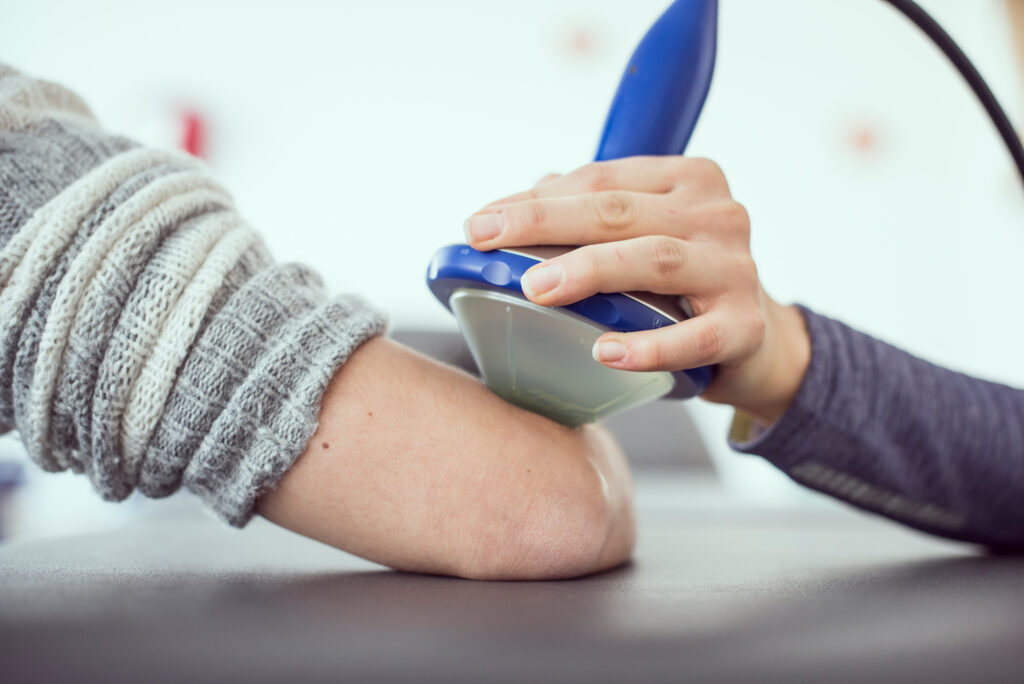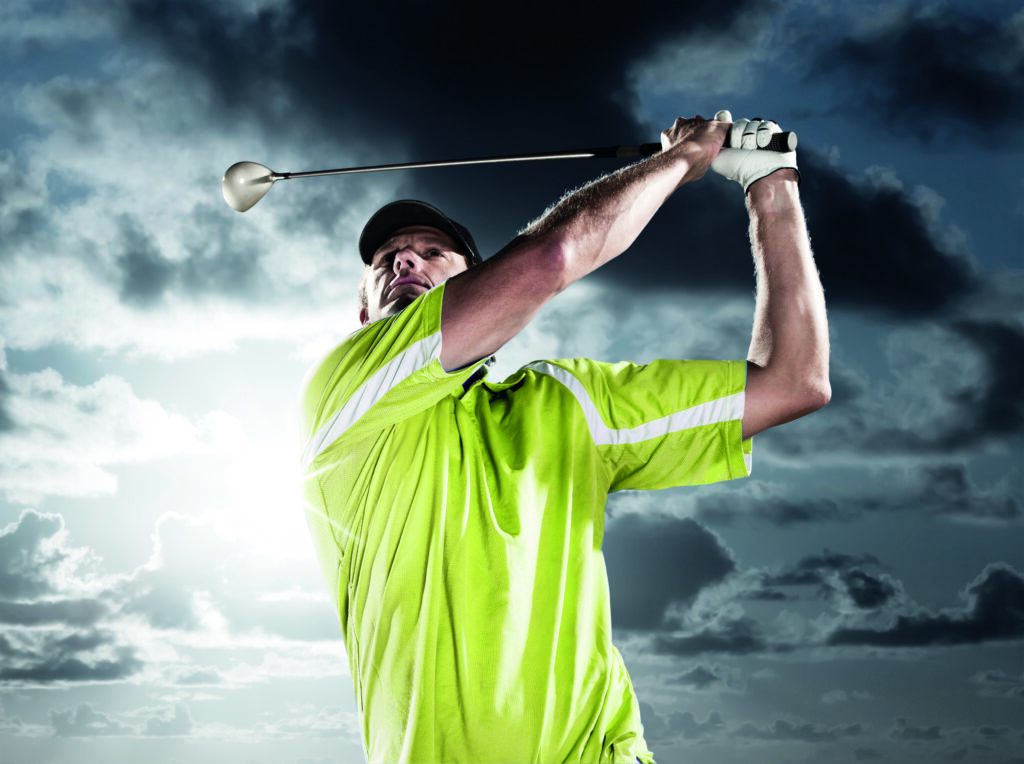A pivotal linchpin
The shoulder is the most flexible joint in the human body with largest range of motion. Consisting of the humeral head and the shoulder blade, it connects the arm to the torso.
As humans evolved from a four-legged to a two-legged gait, the position of the shoulder blade on the rib cage changed. The shoulder blade, and thus the position of the entire upper extremity, has migrated backward and downward. This has fundamentally changed the biomechanics of the joint and provided greater range of motion. Thanks to a controlled flow of movements, humans are capable of performing very precise and powerful activities with their upper extremities. This made it possible for men to both make and throw e.g. a spear for hunting with a high degree of acceleration and accuracy.
This has given humans advantages over other species throughout evolutionary history. Primates, such as the chimpanzee, have much more power, but they can’t throw nearly as precisely and quickly as humans. This made men successful hunters, which probably had a significant influence on our continued development.
However, the extreme mobility of the shoulder also makes it prone to wear, tear and injury. In everyday life, at work, but also during sports, this powerful but fragile joint withstands incredibly high strain.




The most common shoulder injuries are:
- Dislocation of the acromioclavicular joint (AC)
- Shoulder dislocation
- Collarbone fracture
- Humeral head fracture
- Torn long biceps tendon
- Tendon rupture
The most common degenerative conditions of the shoulder are:
- Calcium deposits (calcific tendinitis)
- Acute and chronic inflammation of the capsule (“frozen shoulder”)
- Tendinitis
- Tears in the rotator cuff
- Arthrosis
- Nerve compression syndrome
Range of treatments: The shoulder
- Rotator cuff
- Calcified shoulder
- Impingement
- Fractures
- Shoulder instability
- Biceps tendon tears
- Arthrosis
- Frozen shoulder
- AC joint
Special upper extremity disease
Epicondylitis — tennis and golfer’s elbow


Causes
Pain at the bony prominence on the outside of the elbow (lateral epicondylitis, tennis elbow) where the tendons attach is usually caused by overloading and repetitive strain. In contrast, ‘golfer’s elbow’ (medial epicondylitis) is caused by a strain of the flexor muscles on the inside of the elbow. In both conditions, increased vascularisation, as an expression of inflammation, and increased protein deposition, as a sign of cell death (necrosis), are evident under the microscope.
Typical symptoms
The area where the affected muscles are attached is typically sensitive to pressure, although there is usually a lack of swelling. When the wrist is bent or extended against resistance, there is severe pain on the inside or outside of the elbow.
Therapy options
- Active strengthening
Targeted strength training is an indispensable way to strengthen overstrained muscles and to prevent pain from reoccurring. - Stretching
Regularly stretching the affected muscles minimises tension and positively affects the healing process. - Targeted massages
Self-massage can eliminate muscle stiffness and improve blood circulation. - Anti-inflammatory medication
Either as an ointment, gel or spray on the skin, or taken in pill form, anti-inflammatory drugs contribute greatly to improving symptoms. - Shockwave therapy
Concentrated pressure waves promote local blood circulation, have a beneficial effect on inflammatory processes, and help to relax the muscles. - Injections
For long-lasting pain, the injection of activated autologous blood (ACP) is often a consideration. - Braces
Especially for patients who perform heavy manual activities, braces can be used as a supplement to basic therapy. - Surgery
During surgical procedures, open or arthroscopic, the patellar apex is rounded off. Dead tissue can be removed at the same time.